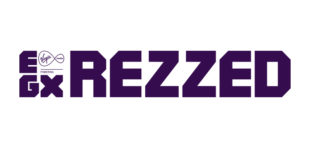They are doing it wrong again. Every time that a new medium emerges the old guard’s first move is to retrofit. They look at the new medium as a new distribution channel for the same old stuff.
I’m talking about cloud gaming.
When moving pictures were invented the first wave of product were stage plays filmed with a camera that did not move.
Producers viewed movies as a solution to an existing problem – rather than paying to transport the actors and sets from playhouse to playhouse, they could film the play and make copies.
We know now that this was the wrong problem. Movies are something different than plays – cameras can move and film can be edited, and a powerful new medium was created.
Now, video games are going through similar growing pains. Using the internet for distribution reduces the costs of creating and shipping packaged goods, eliminates the ability to resell used goods, and more. The old guard sees digital as the answer to their issues.
HEAD IN THE CLOUDS
And, yes, I’m talking about you too, OnLive and Gaikai. These are great technologies. Very smart people run these companies. They created clever solutions to the problems. The wrong problems.
Online is a different medium. Online games are different from console games. The massively multiplayer genre is different from small squad. Persistent world titles are different from arena-based ones.
People have been building online games for many years on a smaller scale. The business was not small because it was inferior to console, but because the technology had not yet advanced to the point where the online medium’s strengths were available to everyone.
It’s not about moving digital bits from the publishers to the players; it’s about connecting the players to each other. It’s about an ongoing stream of new content.
It’s TV versus movies.
Publishers create games the way movie studios create major motion pictures – a years-long expensive process that requires huge up-front marketing.
The best online games are more episodic – because the publisher maintains an ongoing connection to the player. The best games create a continuous stream of content. There is always something new.
A movie lasts 90-to-120 minutes; a TV series has 1,000 minutes of programming per season and a console game has 50-to-100 hours of play, whilst people play online games for that many hours in a single month, and then for years.
QUESTIONS AND ANSWERS
Some social games studios are getting there. We can’t just retrofit old games and shove them through new pipes. That doesn’t take advantage of the strengths of the medium.
What about World of Warcraft? What about Zynga? I think they are not there yet.
The issue I see with WoW is that they release content more like movie studios release sequels, with updates every year or so.
Zynga does a beautiful job testing and polishing its game systems for launch, but the flow of new content doesn’t keep up with the most active players – each title peaks in a month and then go into a long decline.
Social gaming, just like social media, is about engagement, and studios like Zynga fall short.
The Answer? Online games need frequent updates and constant interaction with players.
It is not my purpose to harp on about the direction the industry is heading; I am just offering a perspective from my years of experience in the space.
I spend my days working with the HeroEngine team making sure our technology fits the needs of online. We built our technology platform to support easy updating of content, rapid prototyping and development, and the kind of massively multiplayer interaction that is only possible in this medium.
THE NEW REPUBLIC
I am not placing a risky bet. I’ve seen too many waves of new technologies arrive. The pattern repeats. There are always very well financed companies that are well connected to the previous technology wave who develop major solutions that get it all wrong.
Let’s see how things develop. Let’s see if Star Wars: the Old Republic gets it right. Its developers started the project by licensing HeroEngine, so as to be able to take advantage of the rapid prototyping and easy updating our technology offers.
If SWTOR can do things like stream constant new updates and find ways of consistantly engaging players, they’ll be at the forefront of helping to push the industry in a new and exciting direction.
There are more than 1,000 teams building major and indie games on HeroEngine, using the new free HeroCloud service.
I see a huge wave of new games coming out over the next year and beyond that will change the nature of games, by making them better, more fun and leveraging the strengths that only connected online games can have.
It’s a new way to play.

 MCV/DEVELOP News, events, research and jobs from the games industry
MCV/DEVELOP News, events, research and jobs from the games industry



